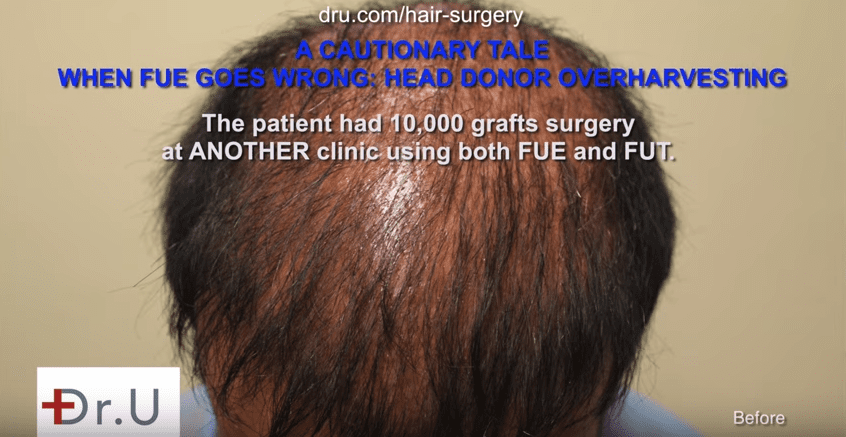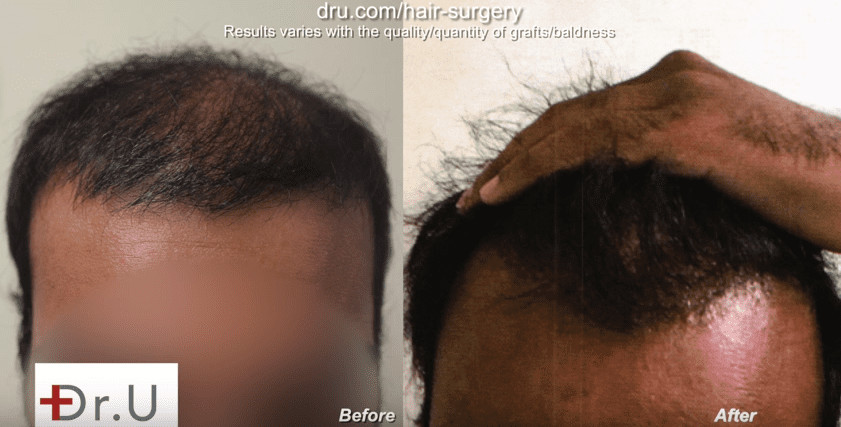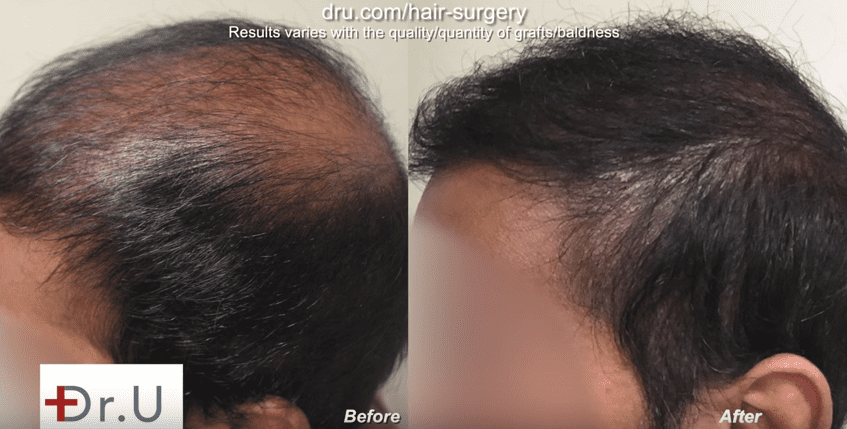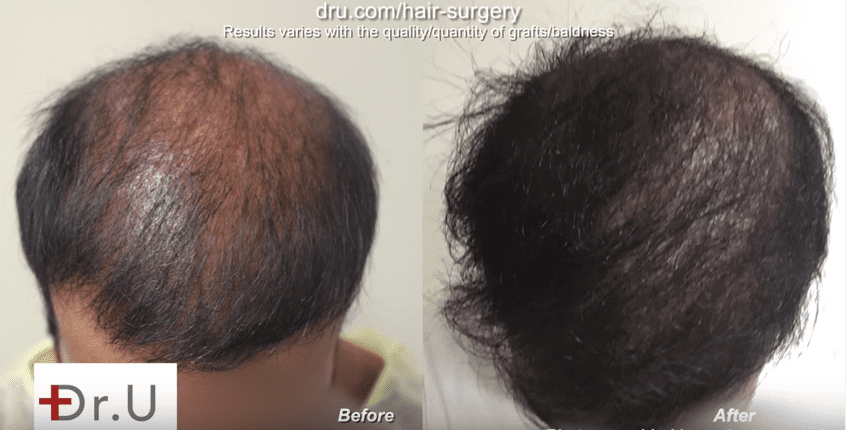FUE Hair Transplant Planning: Bad FUE Hair Transplant planning can lead to unnatural-looking hair, as demonstrated by one of Dr. U’s recent patients. He had previously visited another clinic to correct his severe baldness. Unfortunately for the patient, the clinic he visited practices something that has become a problematic habit of many novice FUE hair transplant clinics, which is over-harvesting of the head donor in a bid to treat severely bald patients using head donor sources alone. They lack the proper skill of technique for credibly restoring severely bald patients.
From another clinic, before seeing Dr. Umar, this patient underwent the FUSS procedure (Follicular Unit Strip Surgery). He later received a basic FUE procedure (Follicular Unit Extraction) using about 10,000 grafts from the head. 10,000 grafts harvesting from a patient’s head is wrong and should be avoided.
Article Update July 2022
What Not to Do Before FUE Hair Transplant Surgery
Besides making sure that your FUE Hair Transplant surgeon has done all the detailed work and planning, there are some things that you, as the patient, must not do before your FUE hair transplant surgery [1]:
- Stop smoking at least 24 hours before surgery, as smoking can affect wound healing and recovery
- Do not have alcohol up to 3 days before your surgery – a week of not drinking before surgery is recommended
- Do not have a haircut before surgery
- Stop taking aspirin or any anti-inflammatory medication 2 weeks before surgery
- Avoid taking anti-depressants, beta-blockers, and blood thinning medications 2 weeks before surgery
- Do not take multivitamin/mineral oral supplements 2 weeks before surgery
Preparing for your hair transplant surgery goes both ways, surgeon and patient. Follow these recommendations and continue reading below to see what precautions and planning should ensure that your FUE hair transplant surgery outcome is the best.
Results of Bad FUE Hair Transplant Planning
The previous clinic did not properly plan the patient’s hair transplant, which is why he was left with scars, a depleted donor source, and aesthetically poor results. His before pictures show that most of the 10,000 grafts did not grow because they are impermanent hair. They only used his head hair as a donor source, which is not recommended for patients who are significantly bald or destined to be so.
If the clinic that the patient visited before seeing Dr. U had used a better Advanced FUE hair transplant technique like the UGraft, they would have done the following:
- Performed an FUE Shave Test [2] to determine the extent of safe donor area to harvest in the head
- Used a tool like the UGraft that optimally utilizes head, body, and beard grafts to expand the donor pool in performing body hair transplants.
- Considered other reasons illustrated in the following video:
VIDEO: Reason for Poor Growth After Hair Transplant
Reason for poor growth after a hair transplant
For more information on Dr. Umar please visit: http://www.dermhairclinic.comLearn more about his specialty in Advanced Follicular Unit Extraction here: http:…
The Dr. U Advanced UGraft FUE Hair Transplant Difference
Dr. U uses his “FUE Shave Test,” which he developed to screen potential patients to determine the best course of treatment for each patient. By doing so, Dr. U can avoid over-harvesting of a head donor source, which is especially important for those suffering from severe baldness.
Dr. U’s screening process and UGraft FUE procedure of taking sources from various body parts has allowed him to perform countless successful surgeries over the past ten years with consistent outcomes and continues refining his technique and technology. As illustrated in this video, Dr. U used the UGraft technique to repair this patient without using a single head hair. Instead, he accomplished the mission using chest and beard grafts alone.
For more information on what Dr. U believes is proper donor management to avoid bad FUE hair transplant planning, view the video here:
Bad FUE Hair Transplant Planning – Patient Photos

The results of bad FUE hair transplant planning after 10,000 grafts surgery at another clinic
The photo above shows the patient before he saw Dr. U and perfectly illustrates the damage that bad FUE hair transplant planning can cause.
The following photos track the patient’s incredible progress after seeing Dr. U. In this body hair transplant-derived donor rework, Dr. U took approximately 6,000 grafts from the beard, chest, and nape areas. After only 5 months, the patient has a new look and restored confidence.



Schedule a Free Consultation with Dr. U Today
If you are interested in hair transplantation, consult with Dr. U using the link or button below.
Consult Dr. U at no cost by completing this form
References
- 1. Preparing for your Hair Transplant – Hair Transplant Surgery Guide. www.medic8.com. Accessed July 28, 2022. https://www.medic8.com/healthguide/hair-loss/hair-transplant/preparing.html
- 1. Umar S. Use of nape and peri-auricular hair by follicular unit extraction to create soft hairlines and temples: my experience with 128 patients. Aesthetic Surgery Journal. 2015;35(8):903-909. doi:10.1093/asj/sjv137



